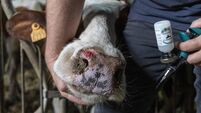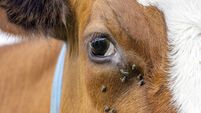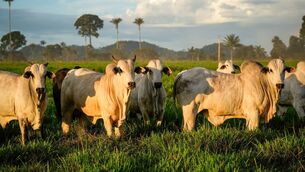Beef sector can cash in on European shortfall
But it will also have to re-position some €200 million worth of exports from the British market to those in continental Europe within the next two years.
These points were made at the Bord Bia organised European Meat Forum which Agriculture and Food Minister Joe Walsh officially opened in Dublin yesterday.
Mr Walsh said the impact of the restoration of confidence in Irish beef has been dramatic.
“We are back to pre-1996 consumption levels. There is not a kilo of Irish beef in intervention. We are selling 85% of our exports in Europe and we have a dependence only on one third-country market, Russia.
“I believe that is phenomenal and I think there is tremendous credit due to An Bord Bia for their marketing, promotional and supporting programme and to the Irish beef industry itself,” he said.
Describing the recovery as stunning, Minister Walsh said it was one of the most spectacular turnarounds in any food or beverage products that he knew of in recent times.
Aidan Cotter, Bord Bia operations director, said the ending of the Over Thirty Month Scheme in Britain, which has excluded up to 200,000 tonnes of British beef each year from the food chain, is now imminent.
It comes at a time when the industry, previously heavily dependent on a sometimes-volatile international market, continues to build its customer base in both Britain and continental Europe.
Last year, Ireland's total beef exports were worth €1.3 billion, of which Britain accounted for €675 million and continental Europe for €400 million.
Mr Cotter said it also follows a major transformation in the European beef market. Chronic surpluses, with soaring intervention stocks and huge exports of more than a million tonnes a year that were once so much a feature of the market, are now a thing of the past.
“Europe now for the first time in a quarter of a century no longer produces enough beef to meet its own needs. Moreover, the reform of the CAP, enlargement, and a further liberalisation of trade under WTO is set to keep Europe in deficit in the future,” he said.
However, Mr Cotter said falling production in Europe is only partly responsible for the transformation in the market. Changing consumption trends and a new consumer confidence is creating scope for further growth and a new mood of optimism in the industry.
With the rest of Europe now producing almost a million tonnes less than it consumes, the business potential for the Irish beef industry with an export availability of half a million tonnes is clear. The industry has already increased its share of exports to Europe from as low as 40% in the 1990s to 83% last year and this will grow further.
However, almost two-thirds of this volume is exported to the British market and with the imminent ending of the Over Thirty Month Scheme there, Ireland will have to find alternative markets on the continent for some 75,000 tonnes of beef, an increase of 50% on our sales to the region last year.
“The industry is well positioned to meet this challenge. It has a proven track record on innovation that allows it to deliver products that are consistent and convenient, including products that are ready to cook, ready to heat, and ready to eat, and that meet the time pressed needs of today’s consumers.
“Moreover, the eating quality of Irish beef and the natural conditions under which it is produced are more aligned than ever to meet the search for indulgence by consumers while also contributing to their health, their enhanced sense of well being and the well being of their environment, he said.










